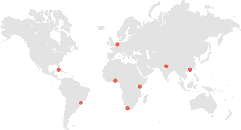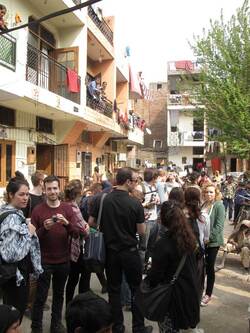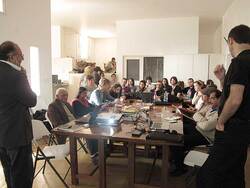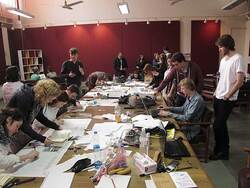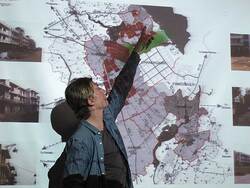Global Housing Studio architecture students from TU Delft explored how the original concepts and ideas behind the design of Chandigarh (as a whole, at the neighborhood scale and individual housing units) could be redeveloped to accommodate the city’s current needs while remaining true to the specific qualities of the city’s unique character.
Students investigated 5 sectors from different periods of time: sector 7 (part of the first phase, which consists of the realization of sectors 1 – 30 during the period 1951 – 1965), sector 37 (part of the second phase, which started in 1966 and consists of the realization of sectors 31 – 47), urban village Burail in Sector 45 (the third phase consists of the realization of sectors 48 – 56 which maintained four villages: Burail, Badheri, Buterla and Attawa), sector 64 and sector 99 in Mohali.
Students:
– Anna Karina Janssen
– Frank Reitsma
– Hendrik Raamstijn
– Marieke Meyer
– Martin Blaas
– Orsolya Mátyus
– Sharon van Kempen
– Sjoerd Broek
– Matteo Schiavone
– Thijs Flore
Tutors:
– Dick van Gameren: Professor Architecture and Dwelling, Faculty of Architecture, TU Delft
– Nelson Mota: Lecturer and researcher, Faculty of Architecture, TU Delft
– Tom Avermaete: Professor Methods and Analysis, Faculty of Architecture, TU Delft
The Charging Chandigarh! design studio addresses the question of design strategies to trigger social integration and support policies aiming at promoting urban cohesion. New towns offer an important analytical support to discuss the extent to which original concepts and ideas behind the design of the city as a whole, the different neighborhoods and the housing units, can be redeveloped to accommodate changing needs and social reconfigurations, while remaining true to the specific qualities of the city’s original project. The case of Chandigarh offers a very interesting example to examine and develop ideas on the seemingly contradicting yet simultaneous qualities of top-down architectural control versus bottom-up adaptability. The re-densification of the inner-city, articulation of individual and collective spaces in Chandigarh’s new urban extensions, slum upgrading and slum prevention will be key aspects discussed in the studio, aiming to encourage the development of design solutions to cater for the demands of the economically weakest sectors of society. This goal will be pursued through a specific focus on urban in-fills designed to trigger mixed urban land uses, appropriate urban densities and a social mix of the population.
Students:
– Naisa Al Kailany, Mania Bien, Floor Brinks
’Acupuncture in Burail’ > pdf (5Mb)
– Luca De Stefano, Justin Frank, Jorge Martín Fernández de Códova
’Charging Communities’ > pdf (31Mb)
– Agnieszka Batkiewicz, Simone Costa
’Densifying the sector’ > pdf (14Mb)
– Jesse van der Ploeg, Vera Wittebrood
’Embedding the urban poor’ > pdf (8Mb)
– Elena Balzarini, Valentina Anne Piras, Piotr Ruszkiewick
’Framing Community’ > pdf (105Mb)
– Juan Camilo Arboleda, Nadia El Hakim, Dominik Saitl
’Rehabilitation in site’ > pdf (46Mb)
– Sarah van der Giesen, Jorinde van Essen
’Stitching the periphery’ > pdf (24Mb)
Tutors:
– Tom Avermaete: Professor Methods and Analysis, Faculty of Architecture, TU Delft
– Nelson Mota: Lecturer and researcher, Faculty of Architecture, TU Delft
– Dick van Gameren: Professor Architecture and Dwelling, Faculty of Architecture, TU Delft
– Hans Kalkhoven: Guest lecturer Architectural Engineering & RMIT, Faculty of Architecture, TU Delft



